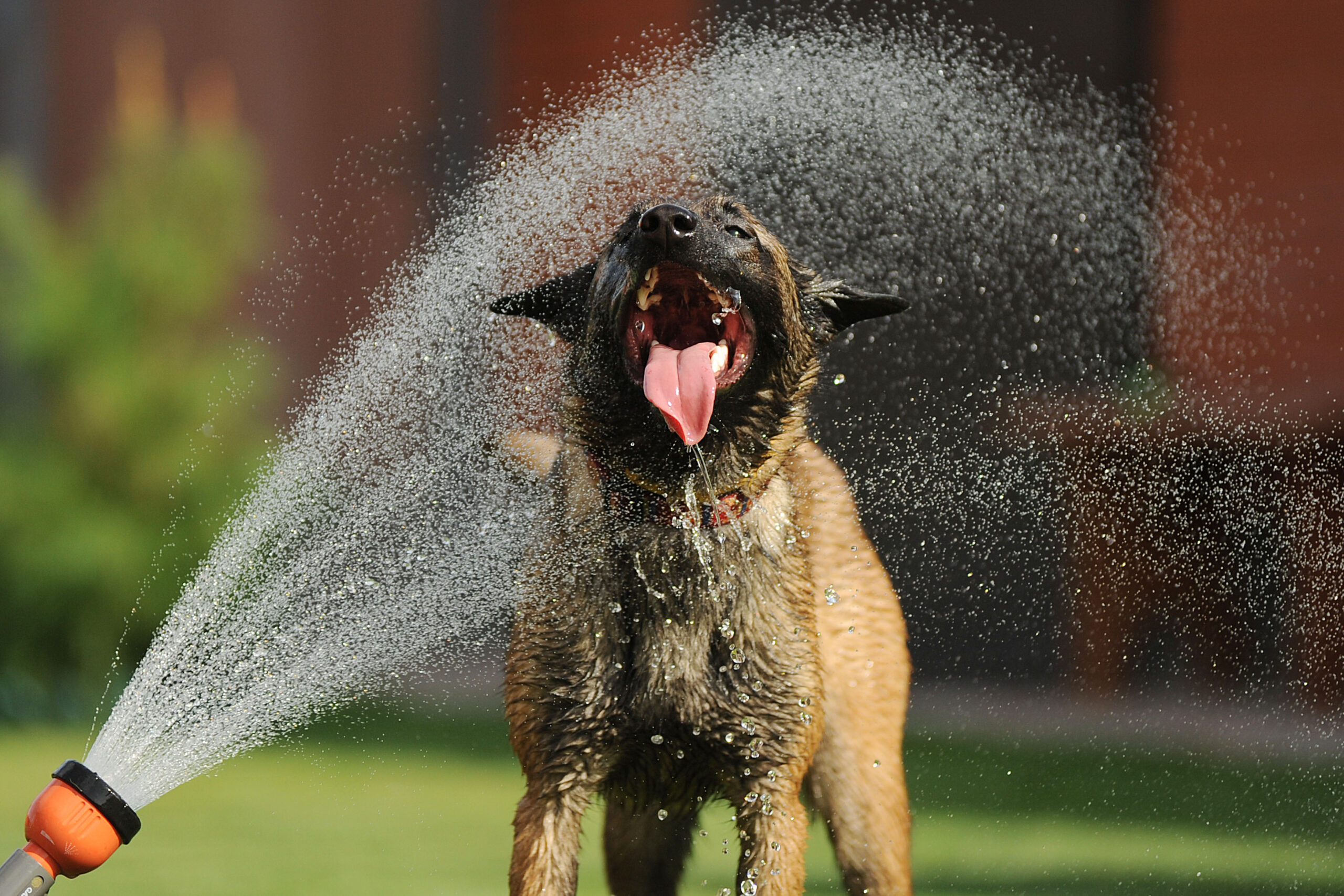It’s hot and we need to drink enough water to stay hydrated and so does your dog.
Preventing dehydration is easy, just a few simple rules to follow and your dog will be enjoying the sunshine and warm temperature even with that big hairy coat
In the summer months when the weather is hot and your dog is more active, then their water intake should be more than twice their normal daily intake so take water wherever you go. An average dog of around 30 to 45 lbs should be drinking at least 4 – 6 cups of water daily and a larger dog of 75 to 90 lbs 8 – 10 cups daily to stay hydrated. If your dog’s activity level is high and the hotter it gets ramp up the water supply to ensure they are getting what they need.
Simple rules:
Keep a nice clean bowl of fresh cold water available at all times: Make sure you rinse the bowl well a few times a day and replace with nice cold fresh water from the tap. When it extra hot rinse as often as possible, add crushed ice to keep water cooler for longer and keep your dogs bowl in a shady area out of the sun as much as you can.
Make sure your dog is drinking from it’s bowl: Keep an eye on your water bowl levels to sure your dog is lapping it up throughout the day and night. If you have more than one dog try providing a bowl of water for each dog and set down in a familiar place, just like with feeding time.
Take water with you: I always carry a small foldable water bowl with me, it fits nicely in a pocket and I keep one in the boot of the car too. Most populated places have taps you can fill up from or in cafes and restaurants they will be happy to fill your dog’s water bowl in return for a pat or a little cuddle with your pooch. When out and about, walking or hiking carry a bottle of fresh water in a backpack or let your dog carry its own with a hydration pack.
Add water to dry food: A handy tip if you feel your dog is not drinking enough is to add fresh water to dry dog food at meal times. Every sip of water helps!

Inspect the dog:
Dry, tacky and pale gums – an easy way to look for dehydration, you are looking for nice pink gums that are moist to the touch. Saliva should also be nice and thin. Thick, sticky and ropey saliva can mean dehydration.
Loss of appetite – If your dog’s eaten habits change and they and they are reluctant to drink it is worth have a word with your local veterinary surgery, a nurse or vet will always be happy to help and answer any questions or concerns.
Tiredness and lethargy – We all slow down a little when its too hot and maybe just need a tall glass of cold water to brighten us up.
Is your dog Peeing – Peeing is important, if your dog not going for a pee regularly or its urine is dark, strong and undiluted it could be another sign of dehydration. Check out that pee when your dog goes for a wee.
Increased heart rate – If you think your dog’s heart rate is up, check for symptoms of dehydration and encourage your dog to drink. If symptoms persist it is always worth seeking veterinary advice for peace of mind.
Of course, your dog and all pets are the same, they need water as much as we do. So, keep that tail wagging and those gums flapping with a nice fresh cold bowl of water (with crushed ice), that will be nice! Just the answer on a sunny warm summer’s day in the UK.
Take water with you: I always carry a small foldable water bowl with me, it fits nicely in a pocket, and I keep one in the boot of the car too. Most populated places have taps you can fill up from or in cafes and restaurants they will be happy to fill your dog’s water bowl in return for a pat or a little cuddle with your pooch. When out and about, walking or hiking carry a bottle of fresh water in a backpack or let your dog carry its own with a hydration pack.
Add water to dry food: A handy tip if you feel your dog is not drinking enough is to add fresh water to dry dog food at mealtimes. Every sip of water helps!

